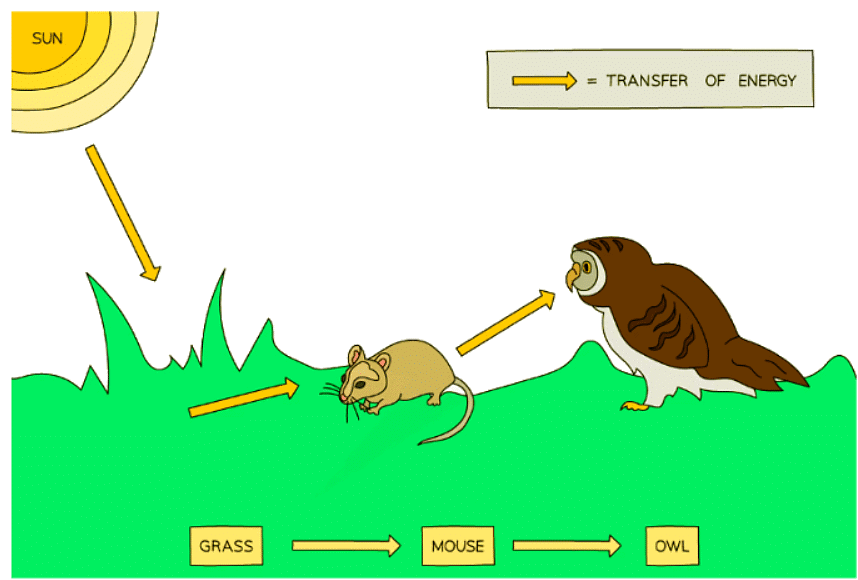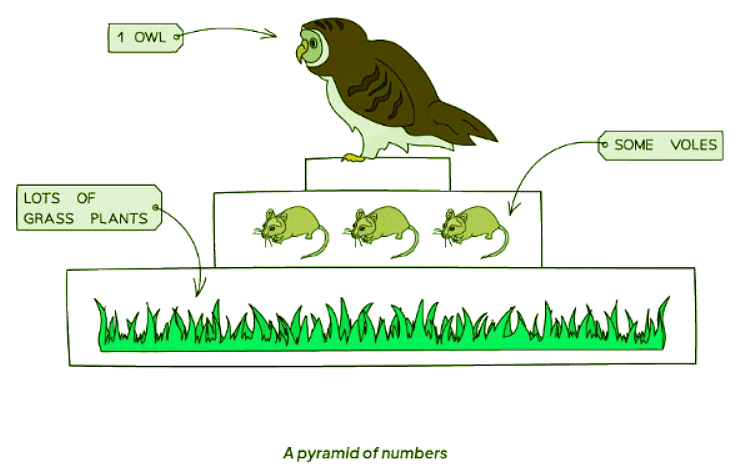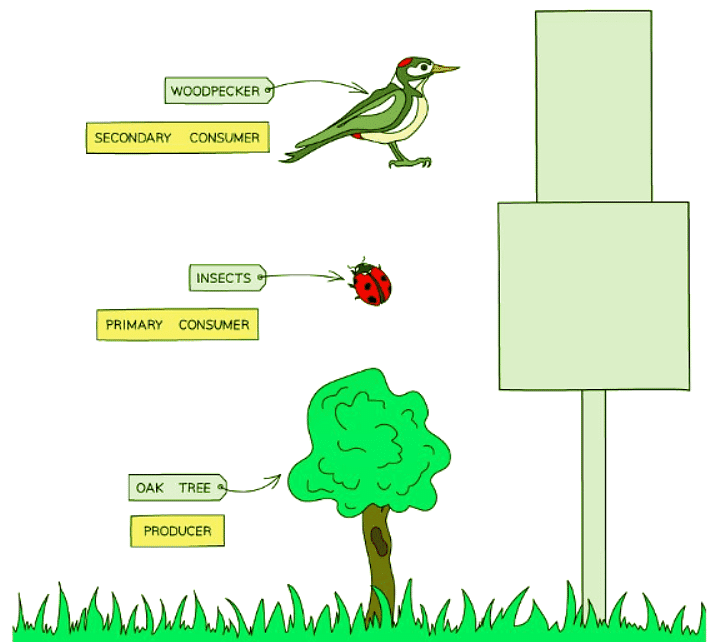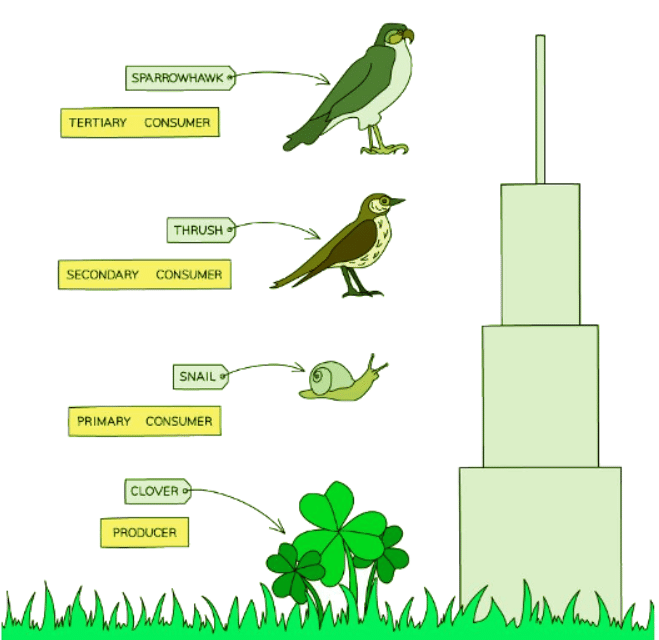Class 10 Exam > Class 10 Notes > Biology for GCSE/IGCSE > Pyramids of Number & Biomass
Pyramids of Number & Biomass | Biology for GCSE/IGCSE - Class 10 PDF Download
Pyramids of Number
- A pyramid of numbers illustrates the quantity of organisms present at each trophic level within a food chain.
- The width of each box corresponds to the number of organisms at that specific trophic level.
- For instance, let's examine the following food chain:
 A food chain shows the transfer of energy
A food chain shows the transfer of energy
- Consider the following inquiries:
- Is it probable that the number of voles in a given area exceeds the number of grass plants?
- How many voles might be required for a single barn owl's daily sustenance? If the number exceeds one, is it plausible that there are more barn owls than voles in the area?
- Thus, a pyramid of numbers representing this food chain would appear as follows:

- Despite the name and common examples, pyramids of numbers do not always conform to a pyramid shape.
 Pyramids of numbers are not always pyramid-shaped
Pyramids of numbers are not always pyramid-shaped
- The size of an organism is crucial in a pyramid of numbers. A larger organism, such as an oak tree, holds enough energy to sustain numerous smaller organisms like insects.
Rules for Drawing a Pyramid of Numbers:
- You must maintain the trophic levels of the organisms in the same sequence as in the food chain, starting with producers at the base, followed by primary consumers, secondary consumers, and tertiary consumers.
- Typically, the population of larger individual organisms is smaller in comparison.
Pyramids of Biomass
- A pyramid of biomass illustrates the mass of organisms at each trophic level, excluding water content, known as their 'dry mass'.
- Pyramids of biomass are consistently pyramid-shaped, irrespective of the pyramid of numbers in a food chain, due to the necessity for decreasing organism mass up the chain.
- This shape is a consequence of the principle that as we move up a food chain, the mass of organisms must diminish. For instance, it's impractical to have 10kg of grass supporting 50kg of voles, which in turn feed 100kg of barn owls.
 A pyramid of biomass
A pyramid of biomass
Pyramids of biomass offer a more accurate representation of the amount of plant or animal material at each trophic level of a food chain, making them a superior method for illustrating interdependence within the chain.
Question for Pyramids of Number & BiomassTry yourself: In a pyramid of numbers representing a food chain, why is the size of an organism crucial?View Solution
The document Pyramids of Number & Biomass | Biology for GCSE/IGCSE - Class 10 is a part of the Class 10 Course Biology for GCSE/IGCSE.
All you need of Class 10 at this link: Class 10
|
110 videos|210 docs|33 tests
|
FAQs on Pyramids of Number & Biomass - Biology for GCSE/IGCSE - Class 10
| 1. What is a pyramid of numbers? |  |
Ans. A pyramid of numbers is a graphical representation of the number of organisms at each trophic level in an ecosystem. It shows the relative number of individuals at each level, with the producers at the bottom and the top predators at the top.
| 2. How do pyramids of biomass differ from pyramids of numbers? |  |
Ans. Pyramids of biomass represent the total amount of living or organic matter at each trophic level in an ecosystem, while pyramids of numbers represent the number of individuals at each level. The biomass pyramid takes into account the mass of each organism, providing a more accurate representation of energy flow in an ecosystem.
| 3. Why do pyramids of numbers usually have a more upright shape compared to pyramids of biomass? |  |
Ans. Pyramids of numbers tend to have a more upright shape because the number of individuals decreases as we move up the trophic levels due to the decrease in available energy. In contrast, pyramids of biomass can sometimes be inverted if the organisms at higher trophic levels have a greater biomass than those at lower levels.
| 4. How are pyramids of numbers and biomass useful in studying ecosystems? |  |
Ans. Pyramids of numbers and biomass provide valuable insights into the structure and functioning of ecosystems. They help us understand the distribution of energy and biomass among different trophic levels, as well as the efficiency of energy transfer between levels. This information is crucial for conservation efforts and understanding the impact of human activities on ecosystems.
| 5. Can a pyramid of biomass ever be inverted? |  |
Ans. Yes, a pyramid of biomass can be inverted in certain ecosystems where the biomass of the organisms at higher trophic levels is greater than the biomass of the organisms at lower trophic levels. This can occur in ecosystems with large, slow-growing organisms at the top of the food chain, such as in some aquatic ecosystems.
Related Searches















